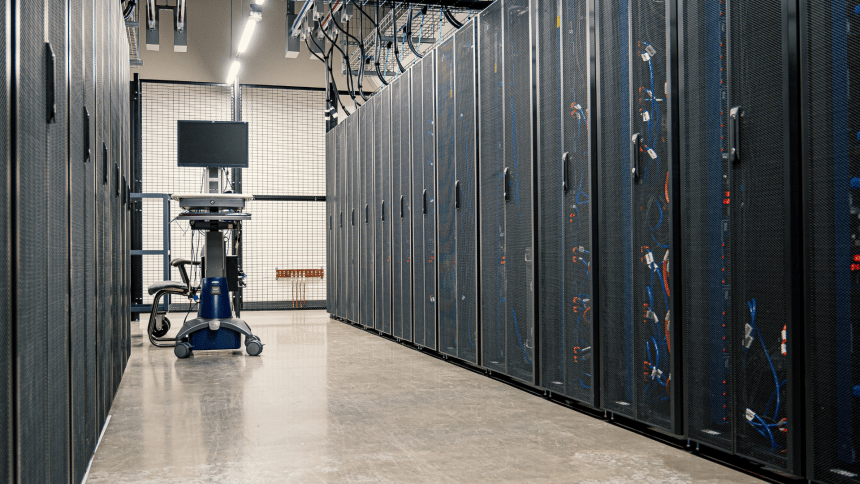Rarely, if ever, do our nation’s most complex public policy problems have a singular cause. Such is the case of rising power bills across the country, and the misleading narrative that electricity is becoming more costly solely because of the growth of the data center industry.
For starters, consider Georgia, where the plan to build multiple new data centers is actually keeping electricity prices steady – bucking the national trend of rising power rates. In fact, Georgia Power, the state’s regulated utility, just got approval to freeze its rates for three years. This rate freeze is possible because data centers are pumping vast sums into the state’s economy and creating sufficient revenues for Georgia Power to stabilize rates for everyone else.
It is also worth noting, that for all the talk about data center development driving up rates across the country, current data centers are actually clustered in a small handful of states like: Virginia, Texas, California, Illinois, Florida, and New York. But with the explosion of Artificial Intelligence, which will be powered by data centers, these facilities are rapidly expanding into new parts of the country.
However, a planned data center or one under construction does not impact current electric prices.
For example, Louisiana just approved what might one day be the largest data center on the planet for Meta (Facebook’s parent company). In the frenzied lead up to the vote by the state’s Public Service Commission to approve electric service for the facility, the false narrative of data centers and higher electric prices took hold. It led to inaccurate headlines like “Louisiana’s electricity costs rise amid data center boom” even though the state only has a handful of data centers, with no impact on Louisiana’s energy prices.
Also, in some states where electricity costs are going up, it’s because of external factors that have created roadblocks preventing new sources of generation. For example, PJM, the mid-Atlantic grid operator that encompasses 13 states and the District of Columbia, has become a regime incapable of bringing sufficient new electrons onto the grid.
Now, anger at PJM’s failings is bipartisan, with nine Governors – Democrats and Republicans – in the PJM footprint recently sending the grid operator a letter stating, among other things, that: “…PJM’s multi-year inability to efficiently connect new resources to its grid and to engage in effective long-term transmission planning has deprived our states of thousands of jobs and billions of dollars in investment…”
PJM’s dysfunction means that its available capacity today is about the same as it was in 2024. So, it’s no surprise that with the rise of electric demand, including from data centers, that PJM’s electricity prices are skyrocketing to alarming levels and creating economic hardships for millions of customers.
Another factor driving up energy costs is that electrification means more Americans are plugging in their electric vehicles, converting to electric stoves, furnaces and water heaters, and using an ever-increasing number of electrified devices. Also, we cannot ignore the fact that parts of the country are experiencing weather extremes, forcing people to use large amounts of electricity to stay comfortable year-round. This drives up energy bills and customers are understandably frustrated.
Other reasons energy prices are rising is because after years of insufficient investment, states now need to spend billions on grid improvements like new transmission lines and distribution wires to people’s homes and businesses. Because of this long-term lack of investment in our electric grid, we are dealing with a series of electricity bottlenecks across the country that drives up electricity costs. Data centers, utilities, regulators and grid operators need to come together on this crisis, to ensure that electricity can move more efficiently across the nation.
It’s also worth noting, that because the construction of data centers is so appealing to states looking to create jobs and fill tax coffers, many will be built. But, again, that doesn’t mean they need to drive-up electricity rates. In Georgia, an additional reason they could implement a three-year rate freeze, was because the electric utility, working with state regulators and their data center customers, was able to create a special rate class for data centers to ensure they cover their share of grid maintenance, and those costs are not passed onto customers.
Other options to protect customers from rate hikes due to data center expansion, include using AI to coordinate with the utilities so that when demand spikes – say during a heatwave – those data centers can be throttled down to use less electricity. Data centers can also have their own generation onsite to reduce demand and lower electricity prices. If those data centers want to also use the electric grid as a backup, again, they must pay their fair share for maintaining that infrastructure. But with coordination and common sense, utilities and data centers can profit without exposing customers to risk.
It’s also worth saying that the rush to falsely blame data centers as the single greatest contributing factor to rising electric bills is not benign. After all, if lawmakers and regulators seek to lower energy costs, by throwing up roadblocks to data center construction, they will be trying to solve a problem by addressing the wrong cause. In the end, the result will be poorly crafted public policy that hamstrings the tech sector and our economy but fails to help the American people cope with rising electricity costs.
The views expressed by contributors are their own and not the views of SuperTalk Mississippi Media.









